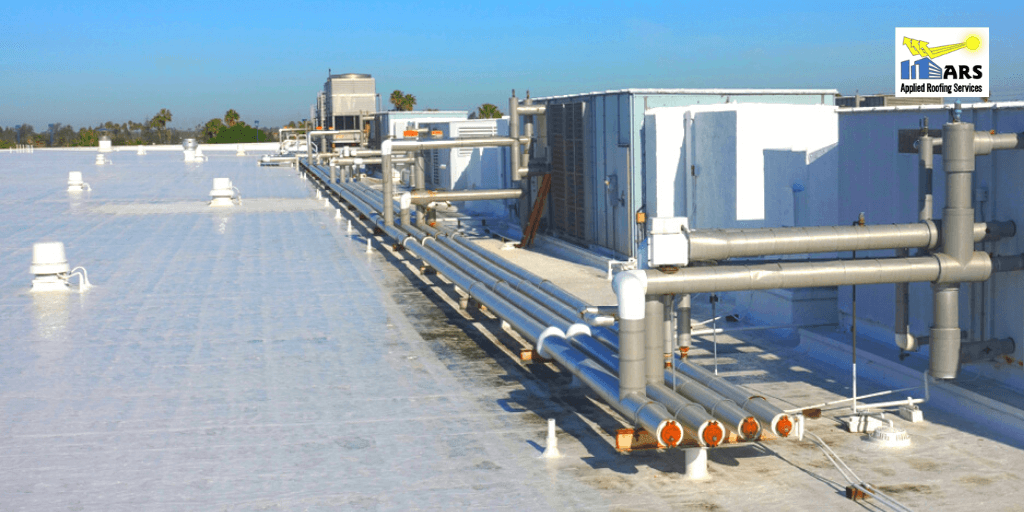


Flat roofs are the most common type of roofing used on commercial buildings. It can be made from different materials and has a lot of benefits for commercial properties. It is crucial to know about flat roofs if you intend to install one on your building.
Flat roofs offer a few advantages for businesses over traditional sloped roofs often seen in residential construction.
The major reason flat roofs are installed on industrial buildings is the cost. Flat roofs are often less expensive to install compared to sloping roofs because of their less surface area, allowing businesses to keep construction costs down.
The positioning of air conditioning units is another reason why many business buildings have flat roofs. When a roof has a low slope, company owners can keep air conditioning units on the roof rather than on the ground. This structure protects HVAC devices from damage and vandalism and eliminates the need to send cold air upwards, which may consume a lot of energy.
Although commercial building roofs seem level from the ground, they actually have a little slope, often around 2%, just enough for water to flow either to the center into a drain hole or the edge.
See Also: Best Flat Roof Benefits in Orange County
The most common commercial building flat roof types are:
This roofing material is reasonably priced and is a fantastic choice for industrial buildings. It uses many layers of industrial-grade cloth, felt, or paper coated with hot asphalt or coal tar for waterproofing.
This roofing comprises many layers of asphalt and polymers and is an excellent alternative for constructing a weathertight design for your business structure.
This alternative is likewise low-cost and long-lasting. It often employs waterproof membranes composed of EPDM, PVC, or TPO. Since they can reflect up to 85 percent of the sun's rays, they may also help keep energy bills low.
See Also: Common Problems With Flat Roofs and Tips for Fixing Them
If you are looking for the best flat roof for a commercial building in California, then contact us today. At Applied Roofing Services, we will get you in touch with our commercial flat roof contractor to get a personalized quote for you. Call us today at 714-632-8418 or get a quote online.